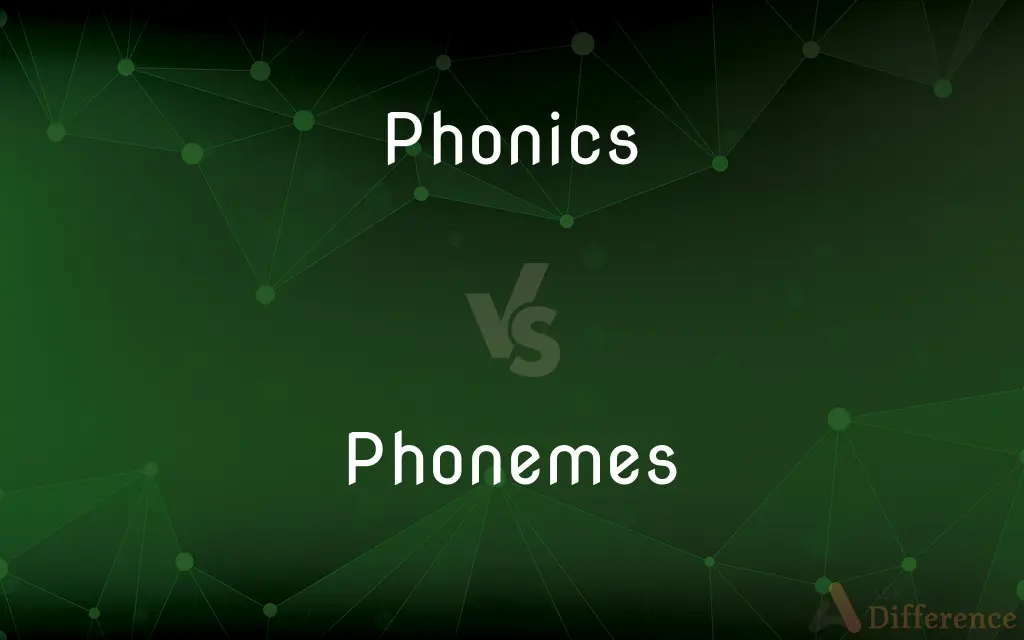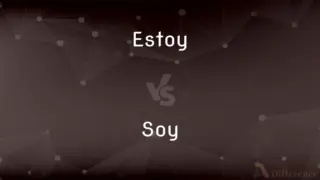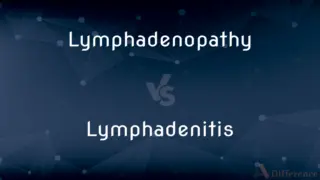Phonics vs. Phonemes — What's the Difference?
By Tayyaba Rehman & Fiza Rafique — Published on February 1, 2024
Phonics is the method of teaching reading based on sound-letter relationships, while phonemes are the smallest units of sound in a language.

Difference Between Phonics and Phonemes
Table of Contents
ADVERTISEMENT
Key Differences
Phonics is an instructional method used in teaching reading, emphasizing the relationship between letters and their sounds. Phonemes, on the other hand, are the smallest units of sound that can distinguish one word from another in a language. Both are foundational to understanding spoken and written language, but phonics focuses on learning to read, whereas phonemes are about the sounds themselves.
In phonics education, learners are taught to associate letters with their corresponding sounds to decode words. Phonemes are the basic vocal gestures of a language, necessary for phonics instruction. While phonics is a method involving the visual aspect of reading and writing, phonemes deal exclusively with the auditory aspect of language.
The goal of phonics is to enable beginning readers to decode new written words by sounding them out, or in phonics terms, blending the sound-spelling patterns. Phonemes play a crucial role in this process as they are the sounds that make up the words that phonics instruction aims to teach. Phonics and phonemes are interdependent in the literacy learning process.
Phonics instruction typically begins with teaching individual letter sounds, then progresses to blending these sounds to form words. In contrast, the study of phonemes involves understanding how different sounds (phonemes) can change the meaning of a word, even with a slight variation. Phonics uses the concept of phonemes to build a bridge between spoken and written language.
Understanding phonemes is essential for phonics instruction as it helps in differentiating words like 'bit' and 'beat', where the difference lies in a single phoneme. Phonics, being a reading instruction technique, relies on this understanding to teach accurate pronunciation and spelling, making phonemic awareness a critical component of effective phonics instruction.
ADVERTISEMENT
Comparison Chart
Definition
Method of teaching reading by correlating sounds with letters or groups of letters.
Smallest unit of sound in a language that distinguishes one word from another.
Role in Language
Aids in learning to read and write by understanding sound-letter relationships.
Fundamental to spoken language, crucial for distinguishing word meanings.
Focus
Primarily on written language and reading skills.
On the sounds that make up spoken language.
Instructional Use
Used in teaching reading and spelling.
Used to develop phonemic awareness, critical for reading and listening.
Example
Learning that 'c' makes a 'k' sound in 'cat'.
Recognizing the difference in sound between 'bat' and 'pat'.
Compare with Definitions
Phonics
Phonics involves teaching how to connect sounds with letters or groups of letters in an alphabetic writing system.
Through phonics, a child understands that 'ch' sounds like /ch/ as in 'cherry'.
Phonemes
A phoneme is the smallest unit of sound that can change the meaning of a word in a particular language.
In 'bat' and 'pat', the phonemes /b/ and /p/ differentiate the words.
Phonics
Phonics is the method of teaching reading based on the sounds that letters represent.
In phonics, students learn that the letter 'B' represents the /b/ sound, as in 'ball'.
Phonemes
Phonemes are distinct units of sound in a specified language that distinguish one word from another.
Changing the phoneme /m/ to /n/ in 'mat' makes 'nat'.
Phonics
Phonics is a method of teaching people to read by correlating sounds with symbols in an alphabetic writing system.
A phonics lesson may involve learning that the letter 's' sounds like /s/ as in 'sun'.
Phonemes
A phoneme is an individual sound that can make a critical difference in language and meaning.
Swapping phonemes /d/ for /t/ in 'dime' changes it to 'time'.
Phonics
It's a reading technique that emphasizes the acquisition of letter-sound correspondences.
Phonics instruction helps a student to read the word 'ship' by blending the sounds of 'sh', 'i', and 'p'.
Phonemes
A phoneme is a sound segment that contributes to the meaning of a word in a specific language.
The words 'fan' and 'van' differ in the initial phoneme.
Phonics
A method of teaching elementary reading and spelling based on the phonetic interpretation of ordinary spelling.
Phonemes
Phonemes are the basic vocal gestures from which the spoken forms of words are constructed.
The difference in the phonemes /k/ and /g/ changes 'cat' to 'gat'.
Phonics
Phonetics.
Phonemes
The smallest phonetic unit in a language that is capable of conveying a distinction in meaning, as the m of mat and the b of bat in English.
Phonics
The study of how the sounds of words are represented by spelling.
Phonemes
Plural of phoneme
Phonics
A method of teaching elementary reading based on the phonetic interpretation of normal spelling.
Phonics
Phonetics.
Phonics
Acoustics.
Phonics
Same as Phonetics.
Phonics
A method of teaching reading and spelling to beginning students, emphasizing the sound values of individual letters and syllables, and the relationship between pronunciation and spelling. Contrasted to whole language method and sentence method.
Phonics
Teaching reading by training beginners to associate letters with their sound values
Phonics
Phonics is an instructional strategy for teaching reading and spelling, focusing on sound-letter relationships.
In phonics, 'ea' in 'bread' and 'bead' are taught to represent different sounds.
Common Curiosities
What are phonemes?
Phonemes are the smallest units of sound in a language that can distinguish one word from another.
Do phonemes include letters?
No, phonemes are sounds, not letters. They are represented by letters in written form.
Is phonics the only method for teaching reading?
No, phonics is one of several methods, including whole language and balanced literacy approaches.
Can phonics be used for all languages?
Phonics is most effective in languages with a consistent phoneme-to-grapheme correspondence, like Spanish and Finnish, but less so in languages with more irregular spellings, like English.
How is phonemic awareness different from phonics?
Phonemic awareness is the ability to hear, identify, and manipulate phonemes, whereas phonics involves connecting these sounds to written letters.
How does phonics help in learning to read?
Phonics helps learners decode words by teaching them how to sound out letters and letter combinations.
Are phonemes the same in all languages?
No, different languages have different sets of phonemes.
How does phonics support spelling?
Phonics teaches the relationship between sounds and their written representations, aiding in spelling.
What is phonics?
Phonics is a method of teaching reading by associating sounds with the letters or groups of letters that represent them.
Why are phonemes important in language?
Phonemes are crucial because they determine the meaning of words; different phonemes can change the meaning of a word.
How many phonemes are in the English language?
English has about 44 phonemes, though this number can vary slightly depending on accents and dialects.
Is phonics instruction necessary for all students?
While beneficial for many, especially early learners, some students may learn to read effectively through other methods.
What's an example of a phonics teaching strategy?
One strategy is using decodable books that emphasize sound-letter correspondences the students have learned.
Can a single letter represent more than one phoneme?
Yes, for example, the letter 'c' can represent different sounds as in 'cat' and 'circle'.
Can phonemic awareness be taught?
Yes, through activities like rhyming, segmenting, and blending sounds.
Share Your Discovery

Previous Comparison
Estoy vs. Soy
Next Comparison
Lymphadenopathy vs. LymphadenitisAuthor Spotlight
Written by
Tayyaba RehmanTayyaba Rehman is a distinguished writer, currently serving as a primary contributor to askdifference.com. As a researcher in semantics and etymology, Tayyaba's passion for the complexity of languages and their distinctions has found a perfect home on the platform. Tayyaba delves into the intricacies of language, distinguishing between commonly confused words and phrases, thereby providing clarity for readers worldwide.
Co-written by
Fiza RafiqueFiza Rafique is a skilled content writer at AskDifference.com, where she meticulously refines and enhances written pieces. Drawing from her vast editorial expertise, Fiza ensures clarity, accuracy, and precision in every article. Passionate about language, she continually seeks to elevate the quality of content for readers worldwide.
















































